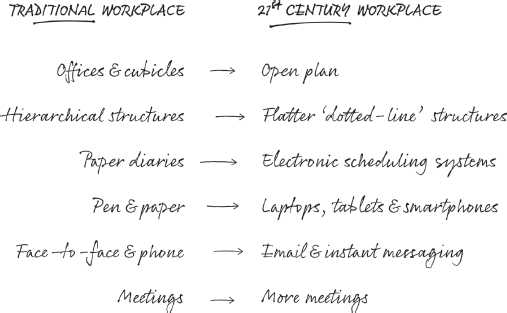INTRODUCTION
The workplace has changed. How we work has changed. The pace of business has changed. How we communicate has changed, and the tools we are using to organise ourselves have changed. It stands to reason that we need to adapt our work practices to deal with these changes.
Productivity in the 21st century
From a productivity standpoint, our workplaces have seen massive changes over the past 30 years (see figure A, overleaf). The tools we use to organise our work have shifted from paper diaries to personal desktop organisers to sophisticated group scheduling systems. We have progressively moved from a paper-driven workplace, to an electronic workplace with a computer on every desk and handheld devices to help us stay organised.
The challenges we face to stay productive have also changed. Many of us are now working in a global workplace, with colleagues and clients located all over the world. We are working longer hours to keep up, and more is expected of us as we compete in the global economy. The workspace too has changed, from individual offices and cubicles to open plan for all and activity-based working where we don't even have our own desk. Massive changes to how we work and stay organised have occurred — some good, some not so good, but all very different from what we have been used to.

Figure A: traditional to 21st century workplace
Many modern workers and ...
Get Smart Work now with the O’Reilly learning platform.
O’Reilly members experience books, live events, courses curated by job role, and more from O’Reilly and nearly 200 top publishers.

